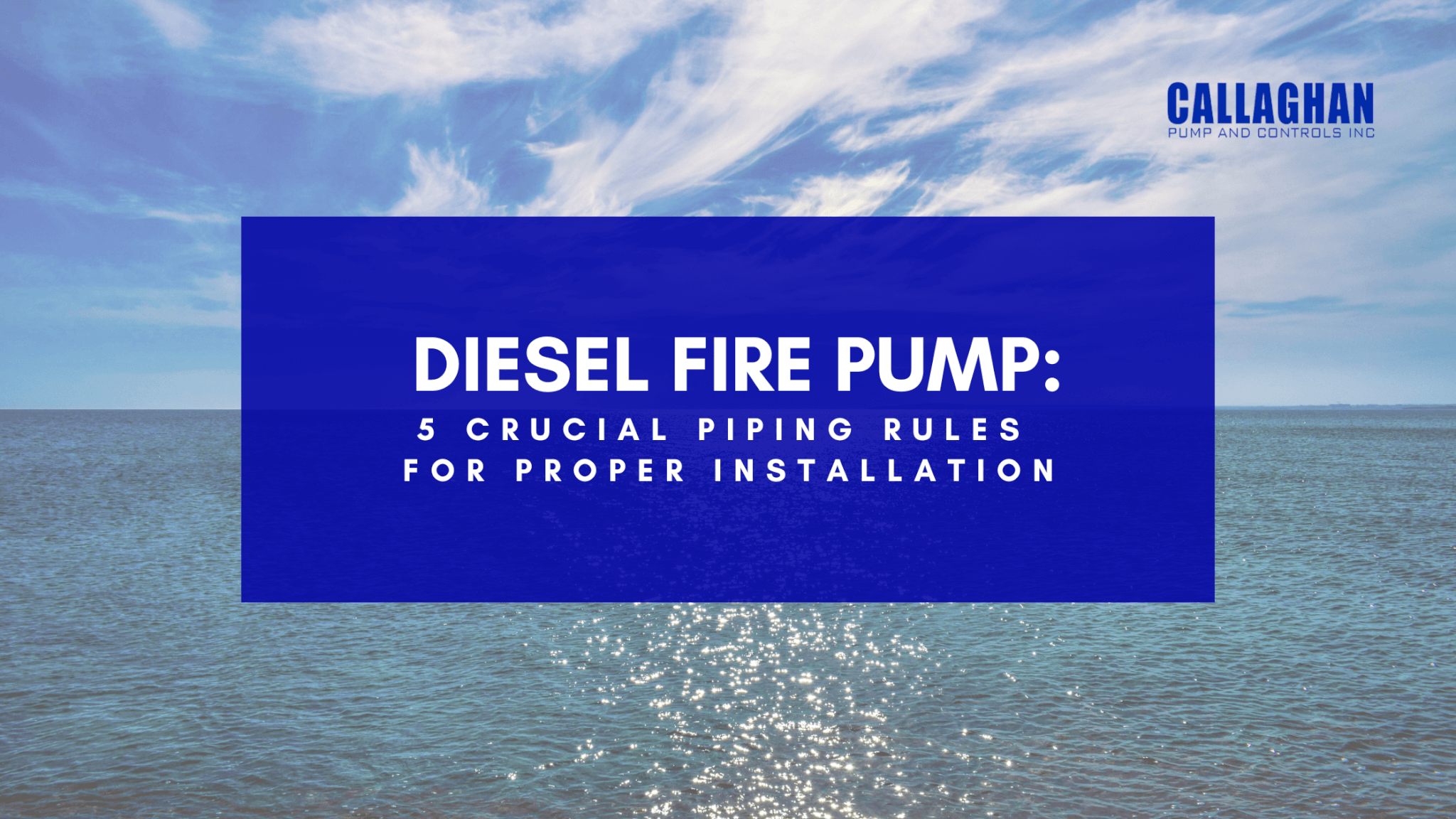5 Crucial Piping Rules for Correct Diesel Fire Pump Installation
October 27th, 2022
Installing a new regenerative turbine pump for your fire protection system? After carefully selecting the right size and design, you will need to set up the pump for a successful installation. For instance, setting the base correctly will help you align the pump properly. Here, it’s important that you don’t overlook the piping when setting up the pump installation.
When installed with incorrect piping arrangements, your diesel fire pump could experience premature and repeated failures. Consequently, maintenance teams will have to regularly repair the pump. So, what should be kept in mind when installing a fire pump?
Important Diesel Fire Pump Piping Arrangements
It goes without saying that effective fire pump installations require an array of piping arrangements. If you are planning to install a diesel fire pump, then you may need to consider numerous pump components and installation standards. In addition to addressing the components that comprise a fire pump installation, careful attention also needs to be given to the piping arrangement.
Information is limited on this topic, except what you may see in the installation, operation, and maintenance manual. But by following these simple piping rules, you can save your whole diesel fire pump package from premature pump failure and pitfalls.
- Keep Suction Piping Short
When it comes to the suction side of your fire pump, use a straight run pipe equal to 5 to 10x greater than the pipe diameter to ensure that the inlet pressure drop remains as low as possible. The pipe should be placed between the pump inlet and any obstruction in the suction line, such as valves, elbows, and tees. It will give you a uniform velocity across the pipe diameter and help your fire pump achieve optimal suction.
- Make the Diameter Equal to/Larger than the Inlet
It is known that pipe sizing can maintain a balance between cost and friction loss. Since larger pipes cost more, smaller pipes tend to impose greater friction. In terms of diameter, your discharge pipe diameter should match the discharge flange. Keep in mind that it can be larger to reduce friction losses, avoid cavitation, and produce an even water flow.
- Install Eccentric Reducers on the Suction Side
On the suction side, the diameter of the pipe can be the same size. However, it is often in a bigger size. So, consider using eccentric reducers on the suction side when a pipe size transition is required. You can install the flat side of the reducer on the top if water is coming from below the fire pump. When it is coming from the top, mount the flat portion of the reducer on the bottom of the pipe.
- Eliminate Mounted Elbows
When you include five to ten pipe diameters of straight run pipe between the pump inlet and elbow, you will need to eliminate elbows mounted on or close to the inlet nozzle of the sensing line for fire pumps. This will help minimize the side loading of the pump impeller and develop uniform pump axial bearing and loading.
- Reduce Potential Air Entrapment
Maintaining adequate water levels in supply tanks will require eliminating vortices and air entrapment. Here, you will need to avoid high pockets in the suction piping. Since pockets can trap air, keep all pipes and fittings tight in suction vacuum conditions to avoid any air from getting into the regenerative turbine pump.
So, these are the rules to follow when it comes to installing a diesel fire pump. If you need any help regarding a diesel fire pump package, then feel free to contact us today.













